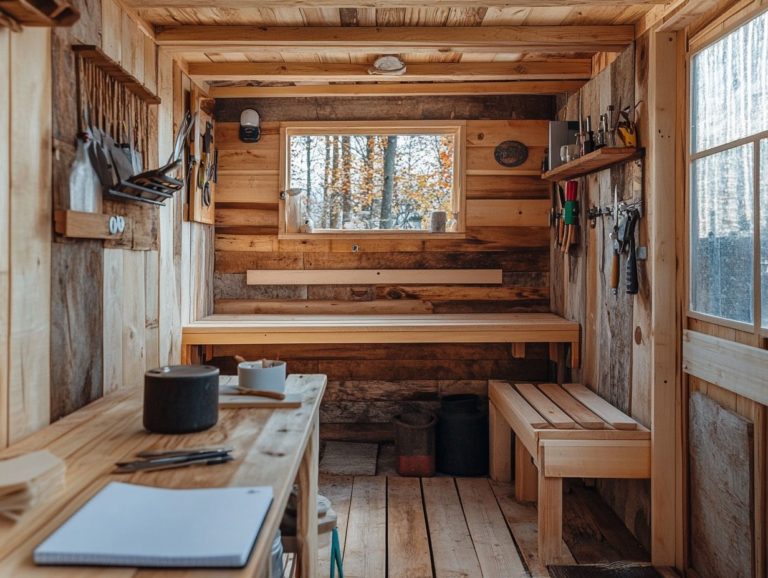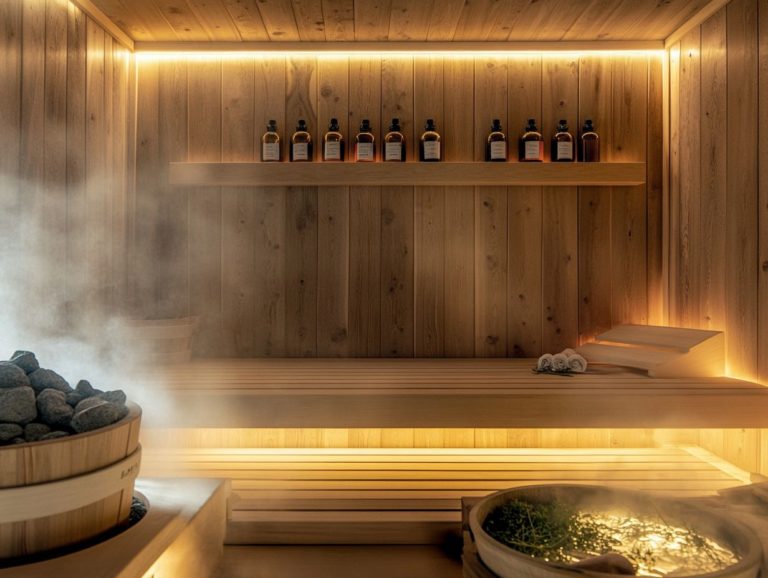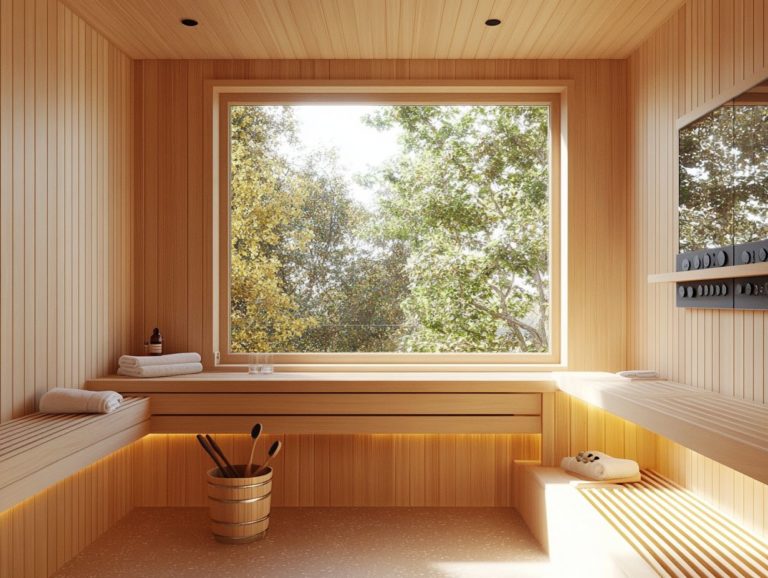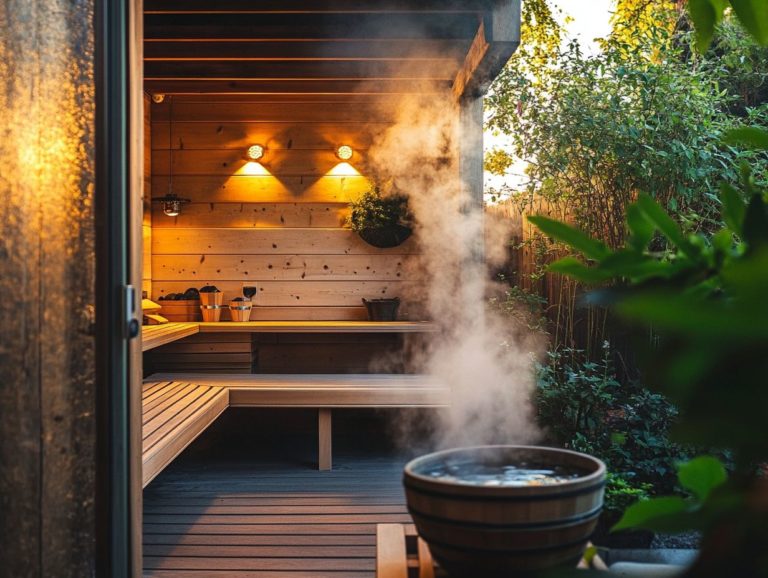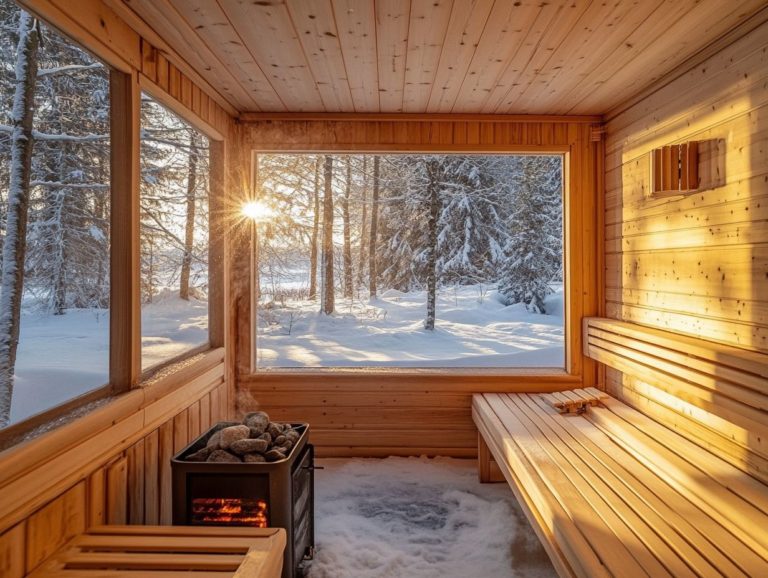“How to Choose a Sauna Heater for DIY Projects”
Sauna heaters bring your sauna to life with warmth and charm! Whether you re a seasoned DIY aficionado or just starting your home spa adventure, choosing the right heater is an important choice. This article explores the various types of sauna heaters, comparing electric and wood-burning options, while guiding you through essential considerations like size, budget, and installation requirements.
You will also find a step-by-step guide for DIY installation, along with essential maintenance tips to ensure your sauna continues to be a safe haven for your relaxation journey.
Contents
- DIY Sauna Heater Installation
- Maintenance and Safety Tips
- Frequently Asked Questions
- What are the key factors to consider when choosing a sauna heater for a DIY project?
- How do I determine the appropriate size of sauna heater for my project?
- What are the advantages of choosing an electric sauna heater for a DIY project?
- What are the benefits of using a wood-burning sauna heater for a DIY project?
- Can I install a sauna heater on my own for a DIY project?
- What are some important safety features to look for when choosing a sauna heater for a DIY project?
Key Takeaways:
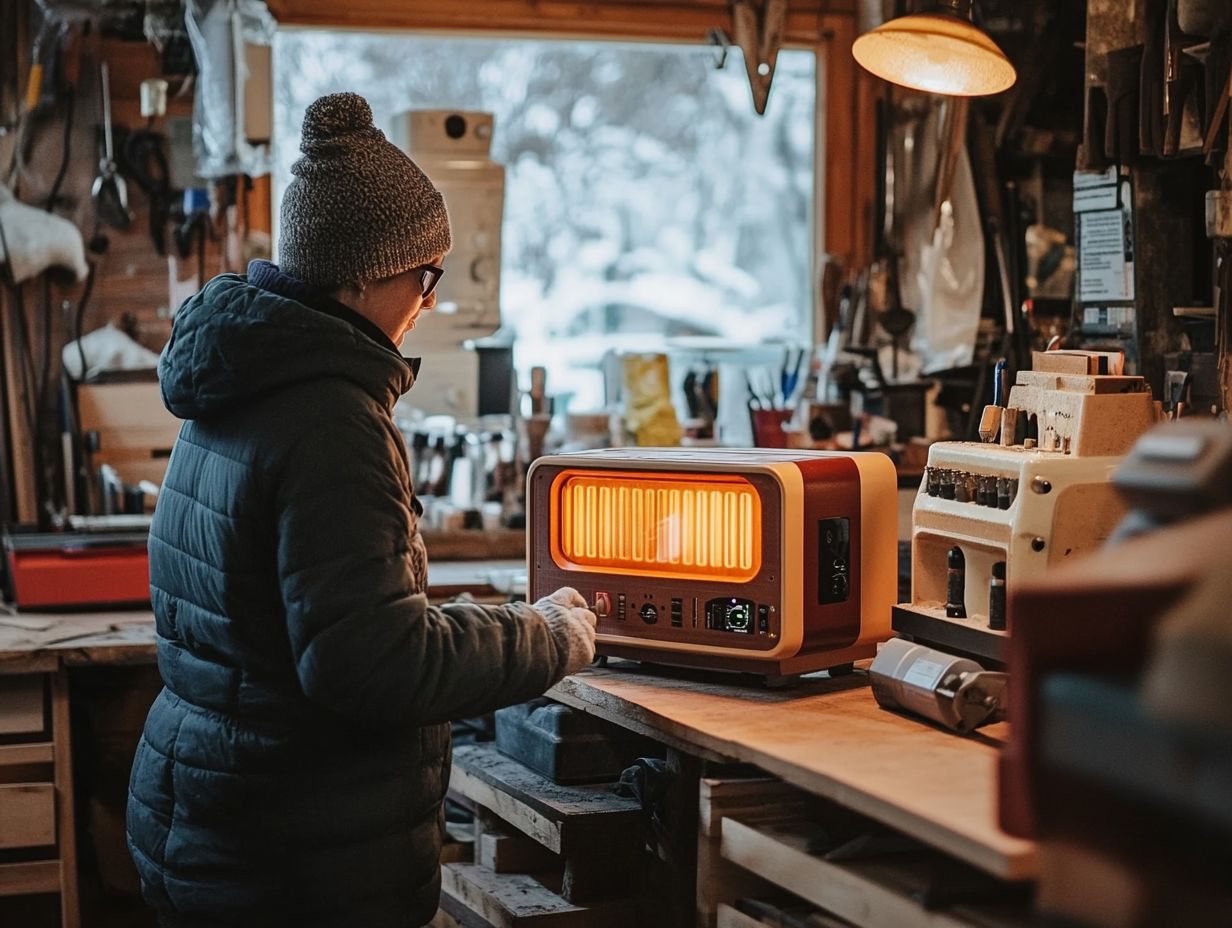
- When choosing a sauna heater for a DIY project, consider the size and capacity needed for your sauna space. This will ensure efficient heating and a comfortable experience.
- Electric and wood-burning heaters are the two main types available. Consider your budget and installation requirements when deciding between the two.
- Proper maintenance and safe usage are essential for any sauna heater. Regular cleaning and following safety guidelines will ensure longevity and prevent accidents.
What is a Sauna Heater?
A sauna heater is a vital element of your sauna, designed to deliver the warmth essential for a relaxing and therapeutic experience. You have a variety of options at your disposal electric sauna heaters, traditional wood-burning heaters, and infrared heaters all tailored to different preferences and needs.
Each type has unique functionalities and how much heat the heater produces, which affects how efficiently your sauna heats up. For instance, you might find electric heaters appealing for their convenience and straightforward installation. If you prefer a more authentic experience, wood-burning options offer delightful natural heat and aroma. Additionally, it’s essential to consider safety when setting up your sauna; learn how to choose a safe location for your sauna. Infrared heaters, in contrast, provide direct warmth to your body, delivering a distinctive experience at lower air temperatures.
Knowing how to position the heater correctly and ensuring proper ventilation can elevate your sauna experience, making it both safe and enjoyable.
Types of Sauna Heaters
Understanding the different types of sauna heaters is key to elevating your sauna experience. Electric sauna heaters, wood-burning heaters, and infrared heaters each offer unique advantages and features tailored to various preferences.
For example, electric heaters are celebrated for their convenience and quick heating abilities, while wood-burning heaters create a classic, nostalgic atmosphere, and infrared heaters provide a gentler, low-temperature option.
By familiarizing yourself with the heater s specifications, you ll be well-equipped to choose a sauna heater that aligns with the volume of your sauna and your personal preferences.
Electric vs. Wood Burning
The decision between electric and wood-burning sauna heaters depends on several key factors, including your preferences, heating efficiency, and installation needs.
As you explore these options, it’s important to understand how each heater functions. Electric sauna heaters are often praised for their straightforward installation; they usually require minimal setup and can simply be plugged into standard electrical outlets. However, to ensure a safe experience, it’s crucial to understand how to choose a safe sauna environment, making them ideal for various home setups.
In contrast, wood-burning heaters may involve a more intricate installation process due to the need for proper venting, ensuring smoke can escape, and a dedicated chimney, which can limit placement options. While electric heaters heat up rapidly, offering immediate enjoyment, wood-burning stoves provide longer-lasting warmth, perfect for extended sessions.
Ultimately, consider your personal preferences, especially the maintenance involved with wood-burning heaters, which typically require regular stocking of wood and ash removal.
Factors to Consider When Choosing a Sauna Heater
Selecting the ideal sauna heater requires careful consideration of various factors to ensure peak performance and your ultimate satisfaction. First and foremost, the size of the sauna heater is paramount, as it significantly impacts heating efficiency and its compatibility with your sauna’s volume.
Understanding the power supply requirements is essential. Ensuring that a qualified electrician manages the installation process will save you from potential headaches down the line. A thorough sauna heater buying guide can help you assess all these critical elements, including size, power supply, and installation needs, while also considering how to maintain a steam sauna, ensuring you make an informed decision.
Size and Capacity

The size and capacity of a sauna heater are crucial for efficient heating and your comfort. To find the right size for your heater, calculate your sauna s volume by considering the dimensions and insulation of your sauna.
The best sauna heater for you will match your sauna’s size and maintain an appropriate power rating for effective temperature control. For additional safety, consider following tips for safe sauna use in public facilities. Skipping this step might lead to inadequate heating or energy waste.
Picking the right power rating is essential for your sauna experience! For example, if you have a larger sauna, you ll need a higher power rating to achieve that cozy warmth quickly and consistently. An undersized heater will struggle to heat the space adequately, leaving you less comfortable.
When choosing your ideal sauna heater, consider other factors such as the type of sauna traditional versus infrared and your personal preferences for heat intensity and duration of use. Additionally, it’s important to know what to bring for safe sauna experiences. These thoughtful considerations will ensure that you enjoy a truly relaxing and invigorating sauna experience.
Budget and Cost
Budget considerations are pivotal when selecting the right sauna heater. Numerous brands and models present a spectrum of pricing options. A well-crafted sauna heater buying guide will illuminate the cost implications associated with different types and brands, helping you avoid overspending.
Be mindful that factors like the installation process and any additional accessories will influence your total investment for setting up the sauna. Evaluate both the initial costs and the long-term benefits.
As you navigate the sauna heater market, you ll notice that entry-level models might begin at just a few hundred dollars, whereas high-end options can soar into the thousands. This pricing disparity often reflects the features, power, and brand reputation associated with each model.
It s wise to budget for installation costs, which can vary significantly depending on electrical requirements and design complexities. Don’t forget to factor in accessories such as sauna stones, controls, and safety features, as these will also contribute to the overall price.
Crafting a comprehensive budget that encompasses both upfront and ongoing expenses is essential for making an informed decision. Don t wait too long find the best sauna heater that fits your budget today!
Installation Requirements
Understanding the installation requirements for a sauna heater is vital for ensuring a safe and efficient setup. The installation process involves several steps that may require the expertise of a qualified electrician, especially when connecting to the sauna power supply.
Key components, such as a sauna vapor barrier (a material that prevents moisture from entering the sauna walls), control panel, and thermostat kit, play critical roles in both the installation and functionality of the heater. Proper installation guarantees optimal performance and safety.
Additionally, ensure the inclusion of a proper electrical circuit, as sauna heaters require specific voltage and amperage levels to operate effectively.
Before you begin the installation, it s wise to consult local building codes and regulations to ensure compliance. Hiring a qualified electrician for this task not only helps meet safety standards but also significantly reduces risks such as electrical fires or equipment damage.
By utilizing high-quality materials and securing all connections, you can prevent potential hazards, ultimately leading to a more enjoyable sauna experience.
DIY Sauna Heater Installation
Installing a sauna heater as a DIY project can be both rewarding and cost-effective. However, it demands careful planning and strict adherence to safety standards.
The installation process encompasses critical steps, including making electrical connections and ensuring adequate ventilation. While the allure of going the DIY route is strong, it might be wise to enlist the expertise of a qualified electrician. This ensures safety and compliance with local regulations.
With the right guidance, you can transform your sauna installation into a successful and functional retreat.
Step-by-Step Guide
A step-by-step guide for installing a sauna heater can turn the process into a seamless experience. It ensures that all necessary precautions are taken.
- Start by assessing the installation area meticulously. Make sure the sauna control panel is ideally positioned and that all materials adhere to safety standards.
- You can tackle many tasks on your own. However, certain steps especially those involving wiring may benefit from the expertise of a qualified electrician to guarantee proper connections and regulatory compliance.
Next, familiarize yourself with the local building codes and regulations. Adherence is key for both safety and legality. It s also crucial to determine the right power source for your sauna heater, whether you choose electric or wood-burning options. Remember, proper ventilation and insulation are vital for optimizing the heater’s performance and ensuring safety.
- Once you have positioned the heater, connect it precisely according to the manufacturer s guidelines.
- Don t hesitate to enlist the help of a qualified electrician for any wiring tasks.
This thoughtful approach safeguards the installation. It allows you to fully relish the sauna experience without worrying about potential safety hazards.
Maintenance and Safety Tips
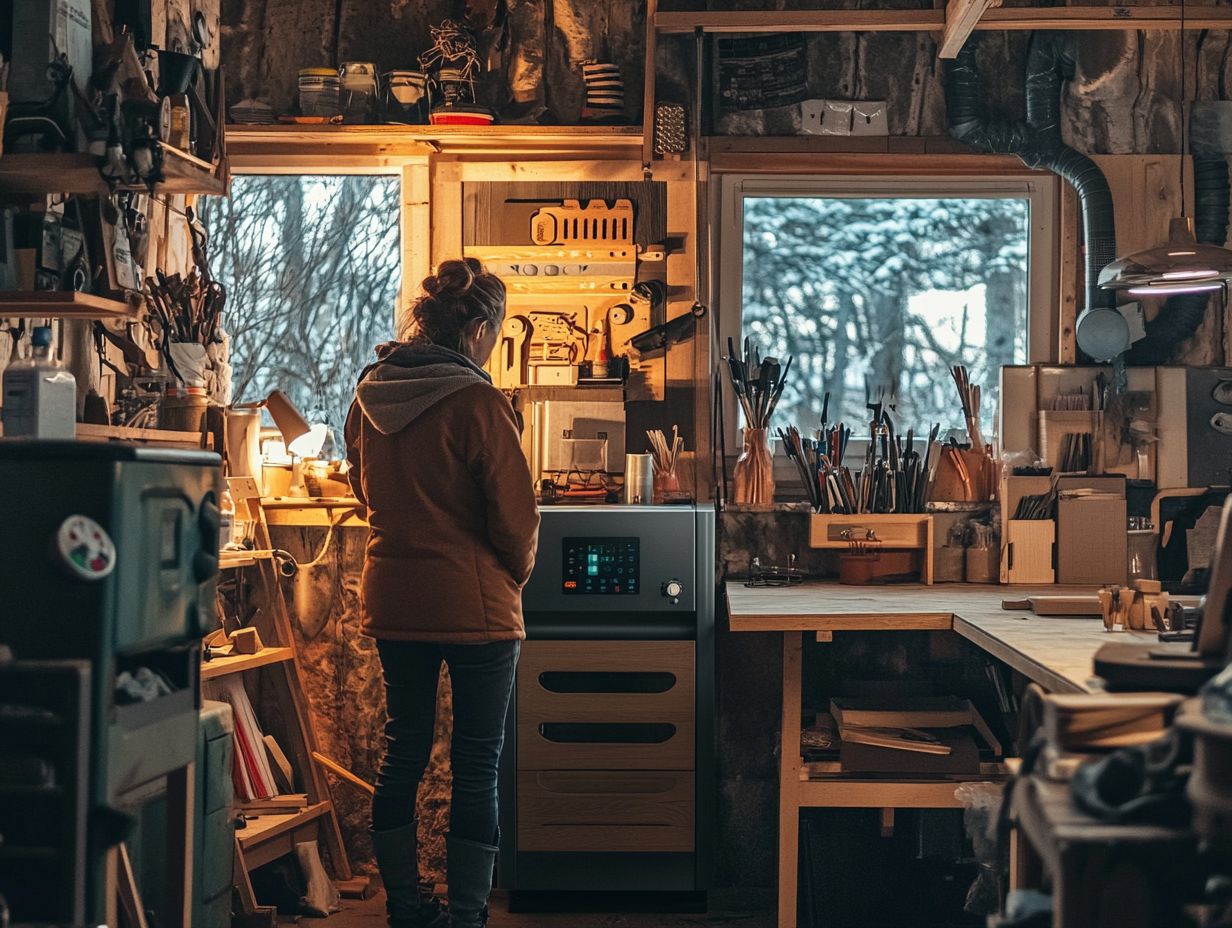
Regular maintenance and safety tips are crucial for maximizing the longevity and efficiency of your sauna heater. Taking the time to clean and care for the heater properly like monitoring the sauna stones and inspecting components can prevent operational hiccups and boost performance.
It’s important to follow safe usage practices, such as setting the correct temperature and ensuring proper ventilation. This is essential for the safety of everyone enjoying the sauna. By following these guidelines, you ll safeguard your investment and enjoy every sauna session!
Regular Maintenance and Cleaning
Regular maintenance and cleaning of your sauna heater are essential. This helps sustain performance and ensures a safe, enjoyable sauna experience.
Keeping the sauna stones clean and free from debris enhances heat distribution and boosts overall efficiency. By routinely checking and cleaning the sauna accessories, you contribute to the functionality and longevity of the heater. Embracing these practices maximizes the performance of your sauna heater.
To keep your sauna heater operating at its peak, adhere to a strict inspection schedule. This should encompass checking the wiring for signs of wear or damage and ensuring the thermostat is functioning correctly.
Make it a habit to regularly clean the heater s exterior and ensure that the heating elements are free from dust. This will help maintain optimal efficiency. Don t overlook the sauna stones; inspect them for cracks or discoloration. Damaged stones can lead to uneven heating and potentially compromise your sauna experience.
By prioritizing these maintenance tasks, you enhance safety and elevate your overall enjoyment of the sauna.
Ensuring Safe Usage
Ensuring the safe use of your sauna heater is essential for a positive and risk-free experience. Pay attention to the heater’s power rating, as it dictates the optimal temperature settings.
Keeping an eye on steam levels is also important to prevent overheating. Using the right sauna accessories enhances safety and comfort.
Monitor temperature settings closely to avoid burns! Keep them between 150 F and 195 F based on your comfort level. Utilizing ways to manage steam, like gradually adding water to the rocks, helps regulate humidity without causing abrupt temperature increases.
Including non-slip mats and wooden benches can help prevent accidental slips, ensuring stability within the sauna. Use a thermometer and hygrometer to get real-time data, enhancing overall safety and comfort while maximizing the healing benefits of your sauna experience.
Frequently Asked Questions
What are the key factors to consider when choosing a sauna heater for a DIY project?
When choosing a sauna heater for a DIY project, consider the size of your sauna, the type of heater (electric or wood-burning), the power output, and the safety features.
How do I determine the appropriate size of sauna heater for my project?

The size of your sauna heater should be determined by the size of your sauna. As a general rule of thumb, have approximately 1kw of power for every 45 cubic feet of sauna space.
What are the advantages of choosing an electric sauna heater for a DIY project?
An electric sauna heater is generally easier to install and maintain compared to a wood-burning sauna heater. It allows for more precise temperature control and does not require a chimney.
What are the benefits of using a wood-burning sauna heater for a DIY project?
A wood-burning sauna heater provides a more traditional sauna experience and can create a more authentic atmosphere. It also does not rely on electricity, making it a good option for remote or off-grid locations.
Can I install a sauna heater on my own for a DIY project?
While it is possible to install a sauna heater on your own, it is recommended to seek professional help to ensure proper installation and safety. Improper installation can lead to fire hazards and other risks.
What are some important safety features to look for when choosing a sauna heater for a DIY project?
A sauna heater should have a built-in safety cut-off switch, temperature sensors, and a timer to help prevent overheating and fire hazards. Ensure the heater is UL certified and meets all safety standards.

